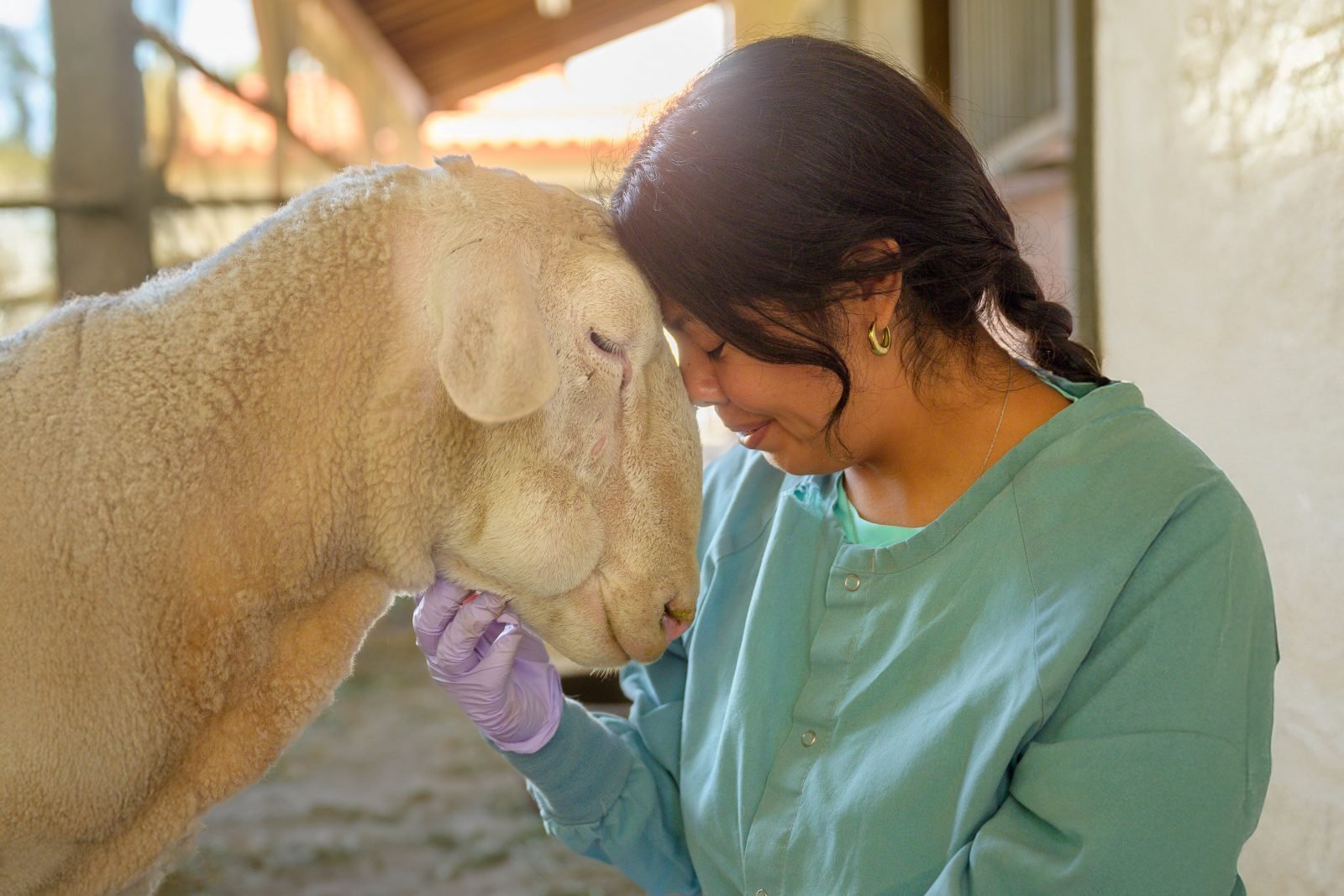Apparently, this was unclear to several people in Carlee’s past. The hole in her ear, left by a tag, suggests that she passed through a local stockyard or city live market, common destinations for young goats, cows, and sheep, as well as chickens, turkeys, and other farm animals. At live markets, animals are often kept in intensely uncomfortable or even dangerous conditions while their flock mates are slaughtered within earshot.
Purchased and received alive, Carlee avoided slaughter, but she wasn’t out of the urban jungle yet. Her purchaser presented her as a gift to a child living in a residential neighborhood in Los Angeles, whose family was in no way equipped to care for a lamb, let alone a full-grown sheep. Sadly, this misguided gesture is not so uncommon. Every year, especially around Easter, we field dozens of calls about baby animals bought on a whim and all too quickly regretted. Treated as disposable novelties, countless such creatures are abandoned, left to fend for themselves against exposure, predation, and starvation. These circumstances more commonly befall baby ducks, chickens, and rabbits, but as Carlee’s story demonstrates, the same short-sightedness can also affect the fates of larger animals.
The advent of factory farming for meat, milk, eggs, and fiber has not only allowed for the breeding and confinement of staggering numbers of farm animals but also effectively insulated most consumers from contact with these creatures, removing a general knowledge of their needs and habits from the purview of common sense. Though plenty of people eat lamb and wear wool sweaters, far fewer have any notion of what sheep are really like, much less how to care for one.
Reality quickly set in for the family who had received Carlee, and they began looking for a more suitable home. After she had been with them for about a month, they connected with Farm Sanctuary. We agreed to welcome Carlee to our shelter in Acton, CA, and headed to LA to pick her up.

When caregivers arrived at the house of Carlee’s family, they found Carlee hiding in a small alley way between the family’s garage and a neighbor’s concrete wall. Though the sheep was reportedly allowed to roam the yard now and then, she had spent the majority of the month confined in the corridor, a passageway so narrow that the caregiver who went in after her could not even turn around. To make matters worse, the neighbors were known frequently to blast loud music at night.
This was no place for a sheep. Carlee was restricted and uncomfortable. Perhaps more importantly, she was lonely. And she was very scared. She was scared of the family tasked with caring for her, and she was scared of the Farm Sanctuary caregivers who had come to bring her to a better place. Even after being at our shelter for a week, she remained terrified of humans. Sheep are flock animals and are frightened when left alone without other members of the flock with whom they bond. Carlee likely came from a flock, but she had been taken away from everything secure in her life.
When she first arrived, interns spent time just sitting with Carlee, gently inuring her to a human presence. In the meantime, other sources of comfort were close at hand. Though frightened of humans, Carlee was enthusiastic about the other animals at the shelter. When she was isolated while we evaluated her health and checked for parasites, Carlee could hear the members of the nearby resident sheep flock talking to each other, and she baaed to them whenever she could hear them. She could see the cows of our main herd when they were in their barn, and she would call to them, too. Cows, like sheep, are herd animals and the cow herd at our Acton shelter have taken on the role of protector of this tiny sheep. Carlee has welcomed this relationship and is comfortable with the cows.
With a clean bill of health, Carlee has become roommates with Bear, a lamb we rescued earlier this year after she was abandoned in a deserted barn. Both young animals come from an industry that tears families asunder, taking lambs from their mothers to be sold for meat. The connection between a mother sheep and her lamb — a remarkably deep, loving, and sustaining bond — was denied these two young animals. But friendships are also vital and wonderful for sheep, and Carlee and Bear will now have the chance to be best friends.
Once they’re a little bigger, these two will join our adult sheep and meet a whole flock of new companions. Being a part of a flock is important to sheep. Surrounded by a big, happy family, with a faithful friend by her side, Carlee will finally feel truly safe. And then she’ll finally feel completely free to be the someone she is inside and out.







